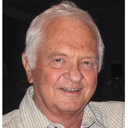ATM activation accompanies histone H2AX phosphorylation in A549 cells upon exposure to tobacco smoke.
Słowa kluczowe
Abstrakcyjny
BACKGROUND
In response to DNA damage or structural alterations of chromatin, histone H2AX may be phosphorylated on Ser139 by phosphoinositide 3-kinase related protein kinases (PIKKs) such as ataxia telangiectasia mutated (ATM), ATM-and Rad-3 related (ATR) kinase, or by DNA dependent protein kinase (DNA-PKcs). When DNA damage primarily involves formation of DNA double-strand breaks (DSBs), H2AX is preferentially phosphorylated by ATM rather than by the other PIKKs. We have recently reported that brief exposure of human pulmonary adenocarcinoma A549 cells or normal human bronchial epithelial cells (NHBE) to cigarette smoke (CS) induced phosphorylation of H2AX.
RESULTS
We report here that H2AX phosphorylation in A549 cells induced by CS was accompanied by activation of ATM, as revealed by ATM phosphorylation on Ser1981 (ATM-S1981P) detected immunocytochemically and by Western blotting. No cell cycle-phase specific differences in kinetics of ATM activation and H2AX phosphorylation were observed. When cells were exposed to CS from cigarettes with different tobacco and filter combinations, the expression levels of ATM-S1981P correlated well with the increase in expression of phosphorylated H2AX (gammaH2AX) (R = 0.89). In addition, we note that while CS-induced gammaH2AX expression was localized within discrete foci, the activated ATM was distributed throughout the nucleoplasm.
CONCLUSIONS
These data implicate ATM as the PIKK that phosphorylates H2AX in response to DNA damage caused by CS. Based on current understanding of ATM activation, expression and localization, these data would suggest that, in addition to inducing potentially carcinogenic DSB lesions, CS may also trigger other types of DNA lesions and cause chromatin alterations. As checkpoint kinase (Chk) 1, Chk2 and the p53 tumor suppressor gene are known to be phosphorylated by ATM, the present data indicate that exposure to CS may lead to their phosphorylation, with the downstream consequences related to the halt in cell cycle progression and increased propensity to undergo apoptosis. Defining the nature and temporal sequence of molecular events that are disrupted by CS through activation and eventual dysregulation of normal defense mechanisms such as ATM and its downstream effectors may allow a more precise understanding of how CS promotes cancer development.


